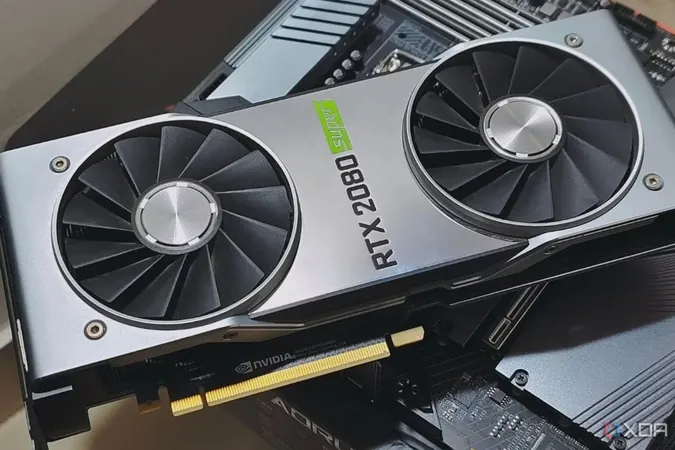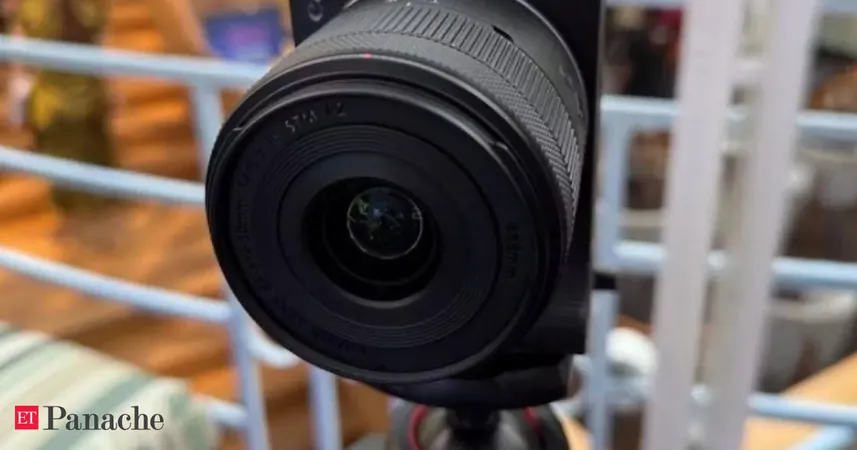
Warning: Why You Should Avoid 8GB VRAM GPUs in 2025!
2025-04-06
Author: Sarah
In the rapidly evolving world of gaming technology, what was once considered sufficient may no longer meet today’s demands. Not too long ago, 8GB of VRAM was deemed a solid choice for gaming graphics cards. Personal experience with an Nvidia GTX 1070, which handled games smoothly at 1080p, exemplified this. However, the gaming landscape has shifted dramatically as 1440p and 4K resolutions gain popularity among PC enthusiasts, making it critical for gamers to reassess what is adequate.
The Ray Tracing Revolution
One of the most significant changes in the gaming industry has been the widespread adoption of ray tracing, a rendering technique that creates incredibly realistic light, shadows, and textures. Initially introduced with Nvidia's RTX 20-series cards, support for ray tracing has become ubiquitous among modern AAA titles by 2025. Games like "Indiana Jones and the Great Circle" and "Assassin's Creed Shadows" even require ray tracing as a standard feature. However, enabling these features significantly increases VRAM demand.
With 8GB of VRAM, gamers can expect limitations when activating ray tracing. Frame rates may spike and dip dramatically as visual settings overwhelm the GPU’s capabilities—leading to stuttering gameplay and frustration. For smooth gaming experiences, an upgrade to higher VRAM is essential.
The Shift to Higher Resolutions
While 1080p gaming still has its place, it is clear that more gamers are transitioning to 1440p and 4K monitoring as standard. Gaming at these higher resolutions not only offers stunning visuals but also dramatically increases VRAM usage. Games on high or ultra settings can easily exceed 8GB of VRAM, forcing a compromise on graphical fidelity.
Imagine striving for the crispest visuals only to find yourself dialing down texture quality or shadow resolution. To enjoy true high-res gaming without performance hiccups, future-proofing your setup with a GPU that boasts at least 12GB of VRAM is a smart move.
Asset-Heavy Games Demand More VRAM
The modern gaming experience features expansive worlds filled with high-resolution textures and detailed character models. Blockbusters like "Cyberpunk 2077" illustrate this point, often using more than 8GB of VRAM even at 1440p settings. As games become increasingly asset-heavy, a lack of adequate VRAM results in slow data streaming from the system RAM, causing hiccups and disruptive texture pop-ins.
Moreover, the prevalence of HD texture packs in games, like those for "Rainbow Six Siege," showcases how increased asset quality can drastically compound VRAM usage. Thus, developers frequently recommend GPUs with 12GB or more to guarantee a smooth playing experience.
A Poor Investment Choice
Investing in an 8GB graphics card may offer short-term satisfaction, but the long-term outlook isn’t pretty. Many gamers retain their GPUs for several years, and the reality is, a card with only 8GB of VRAM might soon become obsolete. Upcoming titles like "GTA VI" and "Battlefield 6" will undoubtedly demand more power, pushing your aging GPU to its limits and prompting an earlier-than-expected upgrade.
Selling an 8GB GPU down the line could also be a challenge as informed buyers seek models that won’t limit their gaming experiences. To avoid risk and the regret of a poor investment, consider aiming for GPUs with 12GB or more VRAM.
Conclusion: Make the Smart Move
As we advance further into 2025, the notion that 8GB VRAM graphics cards can keep pace with modern gaming is becoming increasingly outdated. Unless you are committed to 1080p gaming only, it’s prudent to steer clear of 8GB GPUs altogether. For long-term enjoyment and investment, aim between 12GB to 16GB for a superior gaming experience that can withstand graphics demands for years to come. Additionally, don’t overlook AMD’s offerings, which often provide exceptional value in the mid-range GPU market. Your future self will thank you!




 Brasil (PT)
Brasil (PT)
 Canada (EN)
Canada (EN)
 Chile (ES)
Chile (ES)
 Česko (CS)
Česko (CS)
 대한민국 (KO)
대한민국 (KO)
 España (ES)
España (ES)
 France (FR)
France (FR)
 Hong Kong (EN)
Hong Kong (EN)
 Italia (IT)
Italia (IT)
 日本 (JA)
日本 (JA)
 Magyarország (HU)
Magyarország (HU)
 Norge (NO)
Norge (NO)
 Polska (PL)
Polska (PL)
 Schweiz (DE)
Schweiz (DE)
 Singapore (EN)
Singapore (EN)
 Sverige (SV)
Sverige (SV)
 Suomi (FI)
Suomi (FI)
 Türkiye (TR)
Türkiye (TR)
 الإمارات العربية المتحدة (AR)
الإمارات العربية المتحدة (AR)